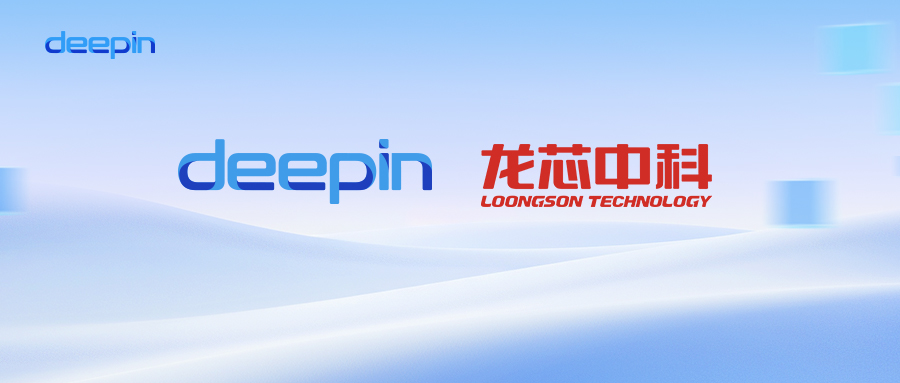
The deepin 23 version has completed adaptation to the LoongArch architecture, which is an instruction set architecture used by processors developed by Loongson Technology, a domestic leader in CPU innovation. This important milestone not only signifies a new step in integrating domestic CPUs with open-source operating systems but also provides LoongArch computer users with a more stable and efficient operating system choice.
Loongson has maintained a long-term deep cooperation with the commercial distribution of deepin, known as UOS, and is referred to in the industry as the "Loong-UOS combination." The two parties have achieved significant accomplishments in ecological adaptation and the implementation of commercial projects. This year, the deepin community established a special interest group (SIG) for LoongArch. With joint efforts, the deepin 23 LoongArch version has achieved several remarkable results.
Achievement One: The Leap in Kernel Support
Through in-depth cooperation, the LoongArch SIG successfully introduced enhanced platform support for the LoongArch architecture in both the 6.6 (long-term support version) and 6.9 (bleeding-edge version) kernel. Considering the demand for the 6.6 long-term support kernel in deepin 23, SIG members ported virtualization and onboard network card support from the latest kernel version to the 6.6 version, aiming to allow users who prefer the stable kernel version to fully experience the performance and features brought by LoongArch devices.
At the same time, the SIG actively responded to user feedback and fixed several key issues, including but not limited to the black screen and system crash that may occur during sleep and wake-up, the occasional driver crash of AMD graphics cards under high load, and the stability issues of USB devices. These efforts significantly improved the usability and reliability of the deepin 23 LoongArch version, bringing users a more stable and comfortable user experience.
Achievement Two: Desktop Support Innovation
On the basis of strengthening the underlying system support, the desktop experience is also one of the core areas of work for the LoongArch SIG. Since May, the LoongArch SIG has actively contributed a series of important patches, including LoongArch support patches for QtWebEngine (covering both Qt 5 and Qt 6 versions), Mesa OrcJIT support patches, and optimization patches for the Pixman 2D rendering library with LSX/LASX vector instructions, aiming to further enhance the user experience through the improvement of core functions and optimization of detailed performance.
Relying on the rich achievements and valuable experience accumulated by the SIG and the upstream community, the pre-installed software suite of deepin 23 LoongArch has now achieved a high degree of functional alignment with the x86 architecture: for example, deepin email, voice notes, and reader have fully supported LoongArch, and widely used browsers and communication tools such as Firefox and Thunderbird have also been updated to the latest versions, ensuring users can enjoy a complete, efficient, and secure user experience.
In addition, the LoongArch SIG has also deeply explored and integrated the libLoL LoongArch application compatibility layer from the Antong open-source community, which effectively reduces the cost and difficulty of migrating from the old ecosystem to the new one. It is particularly worth mentioning that key applications such as WeChat, QQ, and WPS have achieved perfect support for the LoongArch through this compatibility layer.
Achievement Three: Improvement of the Development Toolchain
According to the requirements of the deepin 23 version specification, the LoongArch SIG has completed the adaptation of basic tools such as GCC 12, Binutils 2.41, and LLVM 17. The team has introduced key features such as LSX vector instruction set optimization support and linker Relaxation from the upstream and carried out preliminary functional verification to ensure the development needs of software manufacturers and users while ensuring version compliance.
On this basis, the SIG has further enabled 128-bit vector instruction set optimization for the LoongArch system by default, which can significantly improve the performance of various software under this architecture and optimize the user experience. In addition, to enhance the basic security of the system, we have enabled binary hardening for all system binaries. This move can improve the system's defense against potential security threats and ensure the safety and stability of user data and the system.
The Future Development of LoongArch and deepin 23 and UOS V25
This adaptation is a strong testament to the deep integration and development of deepin with domestic CPUs! In the future, the work of the LoongArch SIG in the deepin community will not only ensure the user experience of the deepin 23 LoongArch version but also continue to promote technical problem-solving on remaining difficult issues such as 7A bridge chip graphics card support and multi-system boot support, making deepin 23 a competitive and user-friendly operating system.
Further enhance the competitiveness of the deepin commercial distribution UOS V25 LoongArch version as a "new ecosystem" commercial system - we believe that by the time UOS V25 is released next year, the support for the LoongArch software and hardware ecosystem will reach a higher level, allowing users of the V20 LoongArch to use a newer, faster, and stronger operating system.
Finally, I have good news to share: the official release of deepin 23 is scheduled for August 15th. Stay tuned for more exciting features and innovative AI applications!
Related Reading:
(1) deepin Full Version Images (including deepin V15)
Content source: deepin community
Reprinted with attribution